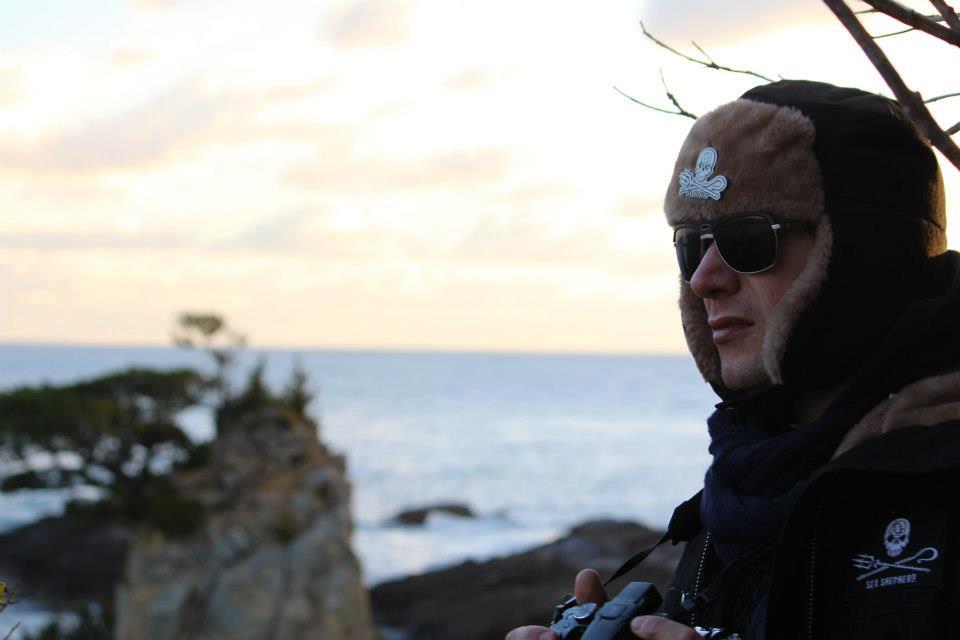 Eyewear professional David Michel discusses his experience at Taiji Cove, volunteering to prevent dolphin slaughter.
Eyewear professional David Michel discusses his experience at Taiji Cove, volunteering to prevent dolphin slaughter.
“There it is: the little town with a really big secret,” announces The Cove’s trailer. (See below.) Viewers soon come to find out that Taiji’s dark secret is the capturing of dolphins (and whales) for captivity and for slaughter. The film, produced by Participant Media, calls attention to the cruel and gruesome treatment that the animals undergo and the great lengths to which these actions are being kept covert.
This film is what inspired New York-based eyewear professional, David Michel, to take a month off work and volunteer some time with the Cove Guardians, a group organized by the Sea Shepherd Conservation Society to put an end to dolphin abuse. The technique they use is called witnessing, a tool that nonviolent activists have used to bring awareness to various forms of violence. Witnessing is the act of deliberately observing a violent situation, documenting it and disseminating the documentation in order to bring public awareness to the issue with the aim of transforming it. Peter Gabriel’s organization, Witness, “uses video to open the eyes of the world to human rights violations.”
 While witnessing may seem quite simple and even passive, David Michel explains that the methods the Cove Guardians use are in fact quite sophisticated. “We woke up every day at 5 a.m. to be down at the Cove at 6 a.m. and take pictures of the fishermen going out in their boats. Then we’d split up into groups so that we could take photos from different view points of the harbor and the cove and gather as much information as possible about the dolphin slaughters.” Cove Guardians are constantly under surveillance by the local police, prefecture police, secret police, the Coast Guard (and even Yakuza), and as such they pay particular attention to making sure that their activities remain fully within the bounds of the law. They do not trespass on the fishermen’s property, nor do they harass them or any of the local citizens.
While witnessing may seem quite simple and even passive, David Michel explains that the methods the Cove Guardians use are in fact quite sophisticated. “We woke up every day at 5 a.m. to be down at the Cove at 6 a.m. and take pictures of the fishermen going out in their boats. Then we’d split up into groups so that we could take photos from different view points of the harbor and the cove and gather as much information as possible about the dolphin slaughters.” Cove Guardians are constantly under surveillance by the local police, prefecture police, secret police, the Coast Guard (and even Yakuza), and as such they pay particular attention to making sure that their activities remain fully within the bounds of the law. They do not trespass on the fishermen’s property, nor do they harass them or any of the local citizens.
“We’re able to document how dolphins are herded into the Cove (sometimes up to 80 of them), mostly slaughtered, while a few get picked to be split up into pens. Trainers then come in on skiffs and pick out the friendliest, usually bottlenose, dolphins to be sent off to aquariums while the slaughtered ones are used for food or animal testing. But if you understand dolphin socialization and movement, you can see that being penned up in a pool and doing flips and jumps for an audience is actually torturous for a dolphin,” says Michel. “They are starved to death until they know how to beg, then they are ready for aquariums. Meanwhile, the other dolphins are being slaughtered for their meat. Sometimes we see the whole cove turn red from the blood.”
 The Cove Guardians use their photos and footage to bring public awareness to the treatment the dolphins are receiving. Their aim is to shame the Japanese government into forbidding the practice. While witnessing can be a strong tactic to bring attention to violence, others tool can complement it in order to transform the situation. In this case, engaging the local community—including the fishermen—about the impact of their actions and helping them find alternative sources of revenue may be particularly relevant. The Cove Guardians are also working to educate the broader Japanese public and get them to join the cause.
The Cove Guardians use their photos and footage to bring public awareness to the treatment the dolphins are receiving. Their aim is to shame the Japanese government into forbidding the practice. While witnessing can be a strong tactic to bring attention to violence, others tool can complement it in order to transform the situation. In this case, engaging the local community—including the fishermen—about the impact of their actions and helping them find alternative sources of revenue may be particularly relevant. The Cove Guardians are also working to educate the broader Japanese public and get them to join the cause.
You can check out David’s photos of his month in Taiji, as well as a video.
Questions for reflection: In what other contexts can the nonviolent action of witnessing be used? What other strategies can complement it? What films have inspired you to take action?

